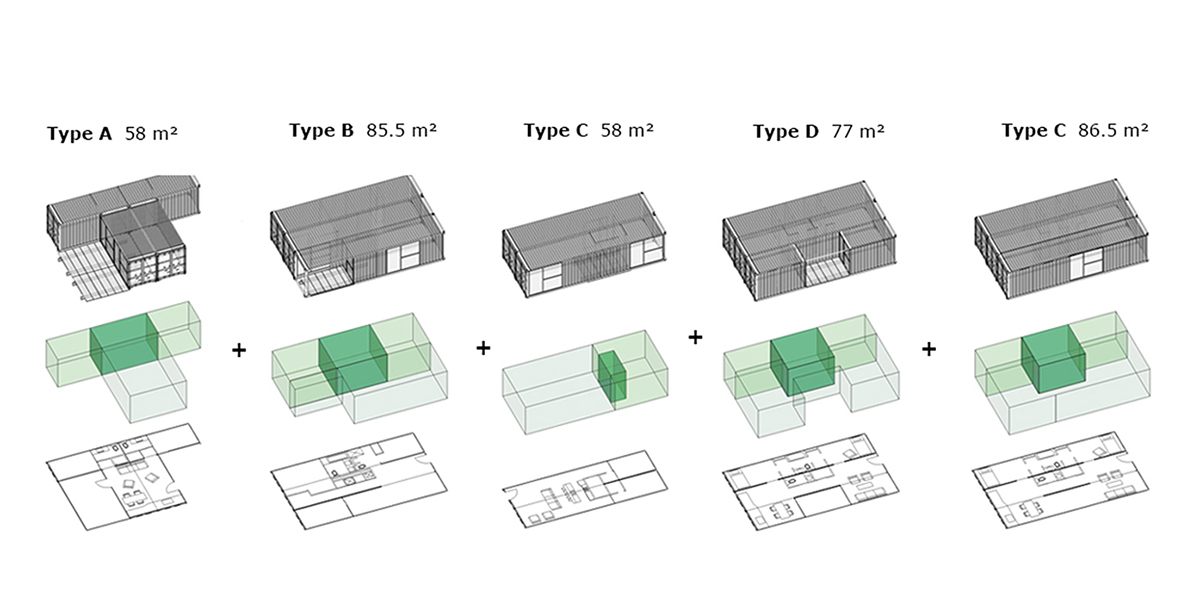Tree of life: Emerging N-formality
The Emergent informality of the tree of life is meant to entitle and empower the neglected urban poor by means of using progressive architecture as a vehicle for social change. Through the use of 3D cellular Automata as a generative system, the project contemplates spaces for housing, health services, religious ceremonies or cults, public education, forums, and workshops for cultural activities, allowing them live in a space where their work, education, and health requirements are met.
Narrative
Favelas, slums, hoovervilles or bidonvilles are informal settlements that provide below average quality housing in agglomerations; They tend to lack basic infrastructure, urban services, designated civic space, social facilities and green areas. Without these facilities, slum dwellers are usually forced to engineer their own informal systems of order. The classic response to the informality of these settlements is a formal intervention that is economically efficient and easy to plan with minimal area and quality standards. These formal developments, mainly focusing on housing, overlook and destroy the informal economic, social, and cultural fabric of the settlement they replace. Eventually leading to the degradation and rejection of the interventions themselves.
Thus, the corner stone in our design proposal is not the provision of housing for the Dharavi; rather, providing a high quality and affordable intervention to residents without destroying their neighborhoods and livelihoods. Rather than neglecting the informality of reality for the formality of intervention i.e. superimposition of order, our design seeks to juxtapose the informal and formal orders in such a way that maintains the actual dynamics of the incrementally developing neighborhoods while providing structured framework for such development. In that sense, the design seeks to address what was, what is, and what will simultaneously.
Metaphorically speaking, our design echoes a tree of life; a concept is sacred to most cultures. The tree of life connects three worlds; it soars upward beyond the undefinable, plunges deep down touching the subconscious, while standing erect on the ground of reality. It retains an unconscious link with our primeval memory and becomes a source of strength.
To create our intervention, we have resolved to contemporary generative design approaches; the 3D Ant Cellular Automata-vertical highway as an extension to Langton’s ant, where a pattern of initial cell/s is replicated along a path called a high way given certain rules and restrictions to create a spatial form. The replication of the cell, a container in our case, creates what C. M. Herr calls a ‘vertical village’: a high-rise structure that provides a rigid frame structure with completely flexible internal spaces and external additions. The design hinges on the "additive system” that can grow and adapt to its site conditions, motivated by the existing self-organizing logic of the Dharavi and at the same time verticalizes the complex interrelationship of informal social networks and urban civic form.
The design builds on the concept of Emergence, which is the spontaneous creation of order and functionality from the bottom up approach. Each of this system is comprised of cells which interact accordingly to redefined rules to create something emergent which is more than the sum of their parts. In other words “emergence is the concept of some new phenomenon arising in a system that wasn't in the system's specification to start with”.
To create such a system, the intervention draws the rules to structure the agglomerations of cells from the social and organizational qualities characteristic of the very environment it seeks to improve, simulating the complex economic and social interactions and norms present within the current Dharavi. Accordingly, the design provides an environment that is disciplined enough to structure growth yet flexible enough to allow change and personalization.
The intervention is made up of three systems: a cell unit, a structure system, and a structural weaved lattice system. The cell unit is the container that is repeated. The structure is made up of modular columns and beams. This system of beams and posts is made of Architecturally Exposed Structural Steel, (AESS). The weaved lattice, whose geometry is based on a voronoi diagram branches and trudges on the Cartesian system and in between spaces just like vines on supports reminiscing traditional vines in the regional villages. The insertion and location of the lattice grows according to varying site conditions and functional needs bringing a dialogue of hierarchy and tectonic.
















